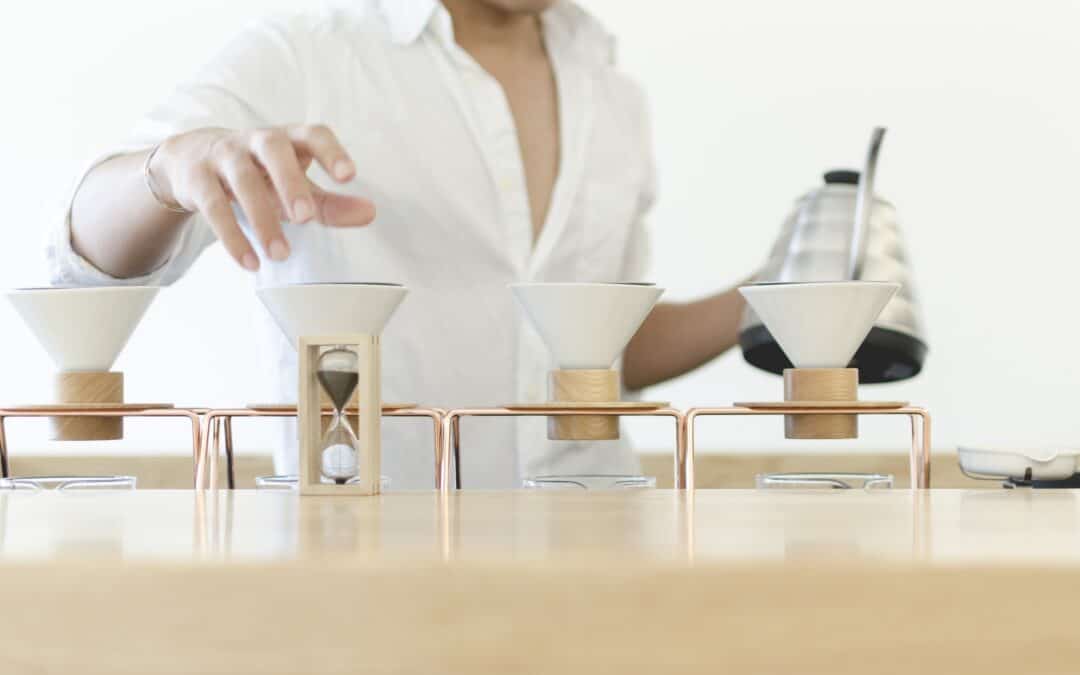In the 9th century, tea was considered the drink of the Japanese royal class, brought back from China by Japanese priests who had been sent there to learn about its culture.
Exclusive no more, tea is now Japan’s most popular beverage, and travelers can sip it just about everywhere, from traditional Japanese tea houses to sushi joints and beyond.
Lately, tea shops have evolved to become more modern in design and approach. In Tokyo, tea rooms with a contemporary twist are popping up across the city. Minimalist, high-design interiors, intricate tea menus, traditional sweet treats (wagashi), new brewing methods and later closing hours are just a few compelling reasons to check out the new wave of establishments.
In these beautifully stark environments, the scents and flavors of a seemingly simple cup of tea create a sensory experience that’s hard to forget. Here are three of our current favorite Tokyo tea rooms.
 Photo credit: Higashiya Ginza
Photo credit: Higashiya Ginza
Located on the second floor of a commercial building in the stylish Ginza neighborhood, Higashiyama offers traditional Japanese teas and wagashi sweets in a serene, stylish interior. Copper and bronze finishes, light wooden tables and modern light fixtures create a cozy vibe, and an ideal setting for sampling herbal and green teas.
Sit down to enjoy the Japanese-style afternoon tea set, served with both sweet and savory nibbles, like kasutera (sponge cake), and a choice of two teas, such as harumoegi, a lightly steamed green tea from Kagoshima in southern Japan.
Sakurai Japanese Tea Experience
 Photo credit: Sakurai Japanese Tea Experience
Photo credit: Sakurai Japanese Tea Experience
Past meets present at the Sakurai Japanese Tea Experience, a tea salon where visitors can enjoy a traditional tea ceremony in a light-filled, contemporary interior. The space’s earthy yet modern design features warm wood accents and a sleek array of minimalist glassware and ceramics.
Sitting at the black, eight-seat counter, visitors can watch as tea master Shinya Sakurai prepares an intricate tea ceremony. Despite the traditional tea-making utensils and Sakurai’s extensive knowledge of time-honored methods, the Sakurai Tea experience is unique, offering a late-night 11 p.m. closing time and creative brewing methods (if a certain tea needs to be brewed at a milder temperature, for example, he will often heat the water and then pour it systematically from cup to cup to cool it down).
Aficionados will love the tea selection, with more than 50 shades of green tea offered. Visitors can try the tea tasting set, which comes with six types of tea and accompanying wagashi like dango (sweet Japanese dumplings made from rice flour), or the five tea tasting course. Sakurai travels around Japan to source the highest quality tea leaves, which are on display throughout the tea room and are for sale in the shop.
 Photo credit: Tokyo Saryo
Photo credit: Tokyo Saryo
Awash in bright light, the Tokyo Saryo tea house in the Setagaya neighborhood of Tokyo is the epitome of Japanese simplicity — the salon is a single white room with a central bar that’s surrounded by nine tall stools. A soft color palette of off-white, matte black and light wood creates a tranquil backdrop for a wide selection of delicious teas, each one prepared for visitors by using wood and copper pour-over set-ups designed specifically for the establishment.
Tea lovers can choose from a variety of single origin teas from across Japan, with simple food pairings like dried fruit, yokan (a red bean dessert that often accompanies tea) and ohagi (mochi balls with red bean paste). The salon itself is very small, but travelers can ensure a visit with a reservation for up to three people.

